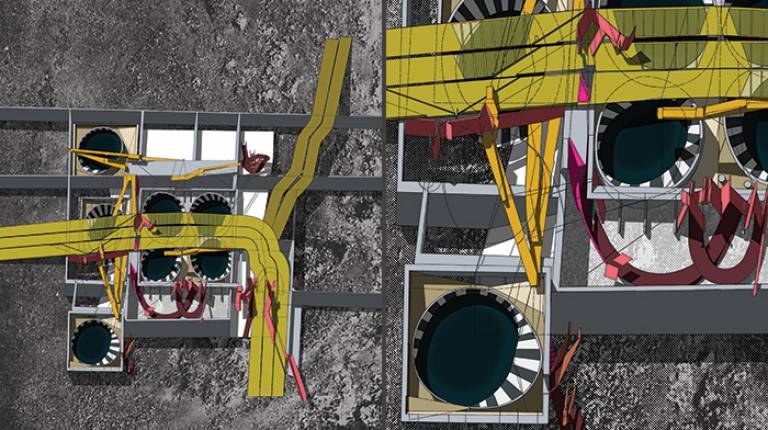Envirographic and Techno Natures
6 December 2016
 Overview
Overview

Envirographic and Techno Natures is environmental architectural design research that investigates how conservation landscapes enable the production of environmental architecture. The research focuses on the potential for hydrological technologies to reflect the specific qualities of the site, and to generate new experiences of a conservation area as well as of sustainable design. Two landscapes were the site for these explorations: the Spanish island of Lanzarote, and the River Severn and Severn Estuary. These proposals concentrate on the use and preservation of their site’s natural resources, and conceive of architecture as an active component of the landscape.
Neo-Natures is a set of three designs – 'Ground Cloud', 'River Reversed' and 'Current Accumulator' – which propose a technological topography interposed into the lava fields and ash pit sites that dominate Lanzarote. As a whole island UNESCO Biosphere Reserve, Lanzarote benefits from its association with the Man and Biosphere Programme, which informs governmental strategies towards the island's use of its natural resources. The island's vulnerability to the effects of climate change threatens its unique biodiversity and its ability to manage the consequences of mass tourism. Each design uses and adapts emerging and dormant environmental technologies and vernacular processes, imagining and re-establishing the surrounding environment as an energy source for the architecture that inhabits them.
Inspired by the complex arguments of providing 'clean energy' for the UK, which comes at the potential detriment of natural habitats of scientific and local significance. Envirographic Techno Natures takes the form of photographic site studies followed by the design of instruments which were used on a field study trip to the River Severn. The Severn is a natural resource that has for centuries been a source of food, water, communication and power for the communities through which it flows; it forms a kind of living infrastructure fused to the built environment through the engineering of canals, bridges, water and the potential of hydropower. Two architectural proposals – the 'Instant Islands' and the 'Severn Lesser Bore Maker' – are sited in an imagined landscape where the natural tidal processes and the tidal bore specifically would be interrupted by the construction of a hydropower barrage across the river.
People
Laura Allen
View Laura's profile
Send Laura an email
Mark Smout
View Mark's profile
Send Mark an email
 Close
Close

